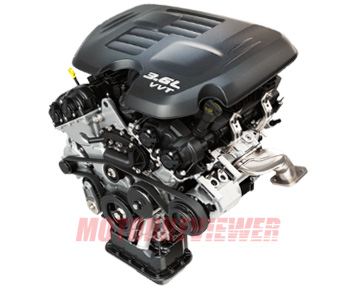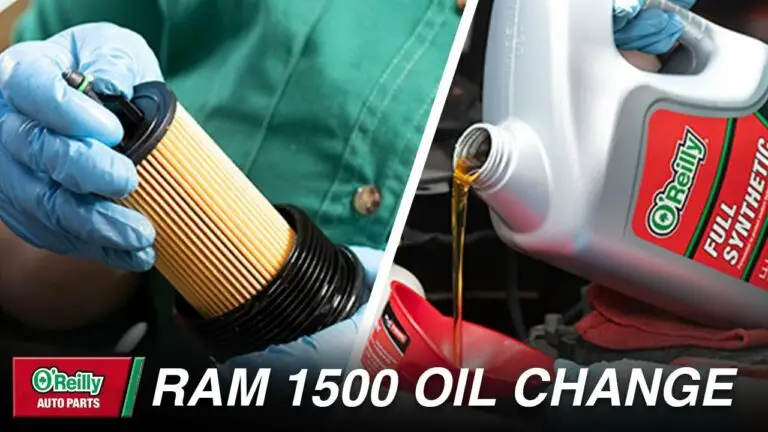Troubleshooting Dodge Ram 4WD: Why It’s Not Engaging
The 4-wheel drive system in Dodge Ram trucks plays a crucial role in providing better traction, stability, and off-road capability. When the 4WD system is functioning properly, it can help you navigate through challenging terrains such as snow, mud, and uneven roads with ease. However, when your Dodge Ram 4-wheel drive is not engaging, it can limit your truck’s capabilities and potentially put you in a dangerous situation.
Common reasons for 4WD not engaging
There are several reasons why your Dodge Ram 4-wheel drive might not be engaging. Some of these include:
- Faulty transfer case: The transfer case is responsible for distributing power to both the front and rear axles. If it is not functioning properly, the 4WD system may not engage.
- Damaged or disconnected vacuum lines: Vacuum lines are essential for operating the front axle disconnect system in some models. If these lines are damaged or disconnected, the 4WD system may not engage.
- Faulty actuator: The actuator is responsible for engaging and disengaging the 4WD system. A faulty actuator can prevent the system from functioning properly.
- Electrical issues: Wiring problems, sensor failures, or software issues can all impact the 4WD system’s ability to engage.
In this article, we’ll discuss various Dodge Ram models and the specific issues that may cause the 4-wheel drive not to engage. By understanding these issues, you’ll be better equipped to troubleshoot and resolve the problem.
1997 Dodge Ram 4-Wheel Drive Not Engaging
Typical issues in the 1997 model
The 1997 Dodge Ram may experience several issues that can lead to the 4-wheel drive not engaging. Common problems include transfer case issues, vacuum line problems, and actuator failures. Since these components are critical for the proper functioning of the 4WD system, it’s essential to diagnose and repair them to restore your truck’s performance.
Identifying and resolving transfer case problems
One of the primary causes of the 4-wheel drive not engaging in a 1997 Dodge Ram is a malfunctioning transfer case. The transfer case is responsible for distributing power to the front and rear axles. If it’s not working correctly, the 4WD system won’t engage. Here’s how to identify and resolve transfer case issues:
- Check for any visible damage or leaks around the transfer case. If you notice any leaks or damage, consult a professional mechanic for repair or replacement.
- Inspect the transfer case fluid level. Low or contaminated fluid can lead to poor 4WD performance. Refill or replace the fluid as necessary.
- Listen for any unusual noises coming from the transfer case while driving. Grinding or whining noises may indicate internal damage, requiring professional attention.
By addressing these transfer case issues, you can increase the likelihood of your Dodge Ram 4-wheel drive engaging properly.
1999 Dodge Ram 4-Wheel Drive Not Engaging
1999 model-specific concerns
The 1999 Dodge Ram may face unique issues that can result in the 4-wheel drive not engaging. Among these concerns, vacuum line problems are a common cause of 4WD system malfunction. Understanding and resolving these issues can help restore your truck’s 4WD performance.
Vacuum line issues and solutions
Vacuum lines are responsible for operating the front axle disconnect system in some Dodge Ram models, including the 1999 version. If these lines are damaged, disconnected, or leaking, it can prevent the 4-wheel drive from engaging. Here are some steps to diagnose and fix vacuum line problems:
- Visually inspect the vacuum lines: Look for any cracks, kinks, or disconnections in the lines. If you find any issues, repair or replace the affected lines.
- Check the vacuum actuator: The vacuum actuator is responsible for engaging the front axle disconnect system. If it’s not functioning properly, it can prevent the 4WD system from working. Test the actuator by applying a vacuum directly to it and observing if it moves. If it doesn’t, replace the actuator.
- Examine the vacuum reservoir: The vacuum reservoir stores vacuum pressure for the system. If it’s leaking or damaged, it can lead to insufficient vacuum pressure and cause the 4-wheel drive not to engage. Inspect the reservoir for any visible damage or leaks, and repair or replace it if necessary.
By addressing vacuum line issues in your 1999 Dodge Ram, you can help ensure that the 4-wheel drive engages as expected and maintain your truck’s off-road capabilities.
2003 Dodge Ram 4-Wheel Drive Not Engaging
Actuator failures in the 2003 model
The 2003 Dodge Ram may experience actuator failures that can lead to the 4-wheel drive not engaging. The actuator is a critical component responsible for engaging and disengaging the 4WD system. If it fails or malfunctions, the system may not work as expected. In this section, we’ll discuss how to diagnose and replace a faulty actuator.
Diagnosing and replacing the actuator
To diagnose and replace a faulty actuator in your 2003 Dodge Ram, follow these steps:
- Locate the actuator: The actuator is typically mounted on the front axle or transfer case, depending on your specific model. Consult your owner’s manual or repair guide for the exact location.
- Inspect the actuator: Look for any visible damage, such as cracks or corrosion, which may indicate a faulty actuator. Additionally, check the electrical connections to ensure they’re secure and free of debris.
- Test the actuator: If your Dodge Ram has an electronic actuator, use a multimeter to test the electrical resistance. If the readings are outside the specified range, the actuator may be faulty. For models with a vacuum actuator, apply vacuum directly to the actuator and observe if it moves. If it doesn’t, the actuator may need replacement.
- Replace the actuator: If you’ve determined the actuator is faulty, remove the old actuator and install a new one according to the manufacturer’s instructions.
By diagnosing and replacing a faulty actuator in your 2003 Dodge Ram, you can help ensure that the 4-wheel drive engages properly and restore your truck’s performance.
2007 Dodge Ram 4-Wheel Drive Not Engaging
Troubles with the electronic shift system
In the 2007 Dodge Ram, the 4-wheel drive may not engage due to issues with the electronic shift system. This system is responsible for controlling the engagement and disengagement of the 4WD. If it malfunctions, the 4-wheel drive may not engage as expected. In this section, we’ll discuss how to identify and resolve problems with the electronic shift system.
Repairing or replacing the shift motor
The shift motor is a key component of the electronic shift system. If it fails, the 4-wheel drive system may not engage. To diagnose and repair or replace the shift motor, follow these steps:
- Locate the shift motor: The shift motor is typically mounted on the transfer case. Consult your owner’s manual or repair guide for the exact location.
- Inspect the shift motor: Check for any visible damage, such as cracks, corrosion, or loose connections. Ensure the electrical connections are secure and free of debris.
- Test the shift motor: Use a multimeter to test the electrical resistance of the motor. If the readings are outside the specified range, the motor may be faulty. Additionally, listen for any unusual noises while operating the 4WD system, as this could indicate a problem with the motor.
- Repair or replace the shift motor: If you’ve determined the shift motor is faulty, either repair it according to the manufacturer’s instructions or replace it with a new one.
By addressing issues with the electronic shift system in your 2007 Dodge Ram, you can help ensure that the 4-wheel drive engages properly and maintain your truck’s off-road performance.
2016 Dodge Ram 4-Wheel Drive Not Engaging
Common issues in newer models
In newer models like the 2016 Dodge Ram, the 4-wheel drive may not engage due to various reasons, including electrical issues, sensor failures, or software problems. These issues can impact the 4WD system’s ability to engage, which can limit your truck’s performance. In this section, we’ll discuss how to inspect and resolve wiring and sensor issues in your 2016 Dodge Ram.
Inspecting the wiring and sensors
To inspect and resolve wiring and sensor issues in your 2016 Dodge Ram, follow these steps:
- Check the wiring: Inspect the wiring related to the 4WD system for any signs of damage, fraying, or corrosion. If you notice any issues, repair or replace the affected wires.
- Inspect the sensors: Locate the sensors related to the 4WD system, such as the wheel speed sensors and transfer case position sensor. Check for any visible damage, loose connections, or debris. Clean or replace the sensors if necessary.
- Test the sensors: Use a diagnostic scan tool to check for any error codes related to the 4WD system. If you find any codes, address the specific issues according to the manufacturer’s recommendations.
- Verify proper function: After resolving any wiring or sensor issues, test the 4-wheel drive system to ensure it engages and disengages correctly.
By addressing wiring and sensor issues in your 2016 Dodge Ram, you can help ensure that the 4-wheel drive engages properly and enjoy the full potential of your truck’s performance.
2019 Dodge Ram 4-Wheel Drive Not Engaging
Software-related issues
In recent models like the 2019 Dodge Ram, software-related issues can sometimes cause the 4-wheel drive not to engage. These issues can range from outdated firmware to error codes within the vehicle’s control modules. In this section, we’ll discuss how to address software-related problems to restore your truck’s 4WD functionality.
Updating firmware and addressing error codes
To update the firmware and address error codes in your 2019 Dodge Ram, follow these steps:
- Connect a diagnostic scan tool: Use a compatible scan tool to connect to your truck’s onboard diagnostic system (OBD-II). This tool can help you identify any error codes related to the 4WD system and provide valuable information on how to resolve them.
- Update the firmware: If your scan tool indicates that your truck’s firmware is outdated, follow the manufacturer’s instructions to update the firmware. This update can potentially resolve software-related issues that may prevent the 4-wheel drive from engaging.
- Clear error codes: After addressing any software issues or updating the firmware, use the diagnostic scan tool to clear any remaining error codes related to the 4WD system.
- Test the 4-wheel drive: Finally, test your truck’s 4-wheel drive system to ensure it engages and disengages correctly.
By addressing software-related issues in your 2019 Dodge Ram, you can help ensure that the 4-wheel drive engages properly and enjoy a seamless off-road experience.
General Maintenance Tips for Dodge Ram 4WD System
Regular inspections
Regular inspections are crucial for maintaining the performance of your Dodge Ram’s 4-wheel drive system. Check the transfer case, vacuum lines, actuators, wiring, and sensors periodically to catch any potential issues before they escalate. Addressing minor problems early can help you avoid costly repairs and keep your 4WD system in optimal condition.
Fluid maintenance
Maintaining the proper fluid levels and quality is essential for the smooth operation of your Dodge Ram’s 4-wheel drive system. Check the transfer case fluid and differential oil regularly, and replace them according to the manufacturer’s recommended intervals. Using the appropriate fluids can prevent wear and prolong the life of your 4WD system components.
Avoiding excessive strain on the 4WD system
While your Dodge Ram is built for off-road performance, it’s essential to avoid excessive strain on the 4WD system. Engage and disengage the 4-wheel drive only when necessary and avoid engaging it at high speeds. By treating your 4WD system with care, you can prevent unnecessary wear and ensure its longevity.
Seeking professional help when needed
If you’re unsure about any aspect of your Dodge Ram’s 4-wheel drive system or if the issue persists after trying the troubleshooting steps mentioned in this article, consult a professional mechanic for assistance. They have the expertise and tools necessary to diagnose and repair your 4WD system correctly.
By following these general maintenance tips, you can help ensure that your Dodge Ram’s 4-wheel drive system remains in excellent condition and continues to provide reliable performance for years to come.
Preventing Future 4WD Engagement Issues
Inspecting the drivetrain components
Regularly inspecting the drivetrain components is crucial for preventing future 4WD engagement issues in your Dodge Ram. Ensure that you check the transfer case, front and rear differentials, axles, and all related components for signs of wear or damage. Address any concerns promptly to maintain the proper function of your 4WD system.
Keeping your Dodge Ram 4WD system in top shape
To keep your Dodge Ram’s 4-wheel drive system in optimal condition, follow these maintenance tips:
- Follow the recommended service intervals: Adhere to your vehicle’s maintenance schedule as outlined in the owner’s manual. This includes regular inspections, fluid changes, and part replacements as needed.
- Use the right fluids and parts: Ensure that you use the correct fluids and replacement parts specified by the manufacturer. Using improper fluids or parts can negatively impact the performance and longevity of your 4WD system.
- Pay attention to warning signs: If you notice any unusual noises, warning lights, or changes in your truck’s performance, address these concerns promptly. Catching potential issues early can prevent more severe problems down the line.
- Seek professional help when necessary: If you’re unsure about any aspect of your Dodge Ram’s 4-wheel drive system, consult a professional mechanic for guidance. Their expertise can help you keep your truck’s 4WD system running smoothly.
By taking these preventative measures, you can help maintain your Dodge Ram’s 4-wheel drive system in top condition, ensuring reliable off-road performance for years to come.
Conclusion
Maintaining your Dodge Ram’s 4-wheel drive system is essential for optimal performance and a reliable off-road experience. This article has covered various issues that can cause the 4-wheel drive not to engage in different Dodge Ram models, including vacuum line issues, actuator failures, electronic shift system problems, and sensor malfunctions. By understanding the potential causes and addressing them promptly, you can help ensure that your Dodge Ram’s 4WD system remains in excellent condition.
Additionally, regular maintenance, such as inspecting the various components, maintaining proper fluid levels, and avoiding excessive strain on the 4WD system, can help prolong the life of your truck’s 4-wheel drive. If you’re unsure about any aspect of your Dodge Ram’s 4WD system or if the issue persists after trying the troubleshooting steps mentioned in this article, consult a professional mechanic for assistance.
By taking care of your Dodge Ram’s 4-wheel drive system, you can enjoy a smooth and reliable off-road experience for years to come.






